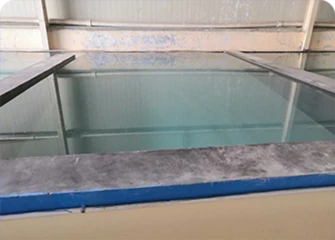Natural mica powder and synthetic mica powder also have great differences in electrical insulation, mechanical properties, chemical stability, application range and cost. Natural mica powder has good electrical insulation, but the volume resistivity is lower than that of synthetic mica. Synthetic mica powder has better electrical insulation properties, high volume resistivity and stable dielectric constant, and is suitable for high performance electrical insulation materials. The hardness of natural mica powder is relatively low (2-3), and it has good elasticity and peeling property. The hardness of synthetic mica powder is higher (between 3 and 4), and the tensile strength and compressive strength are better than that of natural mica powder. Natural mica powder is stable in acid-base solution, but it is easy to decompose at high temperature. Synthetic mica powder is stable to acid and base at room temperature, but will be slowly corroded by sulfuric acid above 300℃. Better thermal stability, not easy to release gas. Natural mica powder is widely used in electrical appliances, welding rods, rubber, plastics, paper making, paint and other fields. Synthetic mica powder is mainly used in high-end electrical insulation materials, aviation, aerospace, national defense industry and other high-tech fields. Because synthetic mica powder needs to be produced through complex chemical processes, its production cost is usually higher than that of natural mica powder. Therefore, in the market, the price of synthetic mica powder is often higher than that of natural mica powder. However, with the continuous progress of production technology and the gradual emergence of scale effects, the price of synthetic mica powder is expected to gradually decrease.
Mica powder, known as industrial monosodium glutamate, is widely used. With the continuous development of technology and application market, and some new requirements have been put forward for the quality of mica powder, so synthetic mica powder has been developed. Compared with the natural mica powder processed by natural mica ore, and the synthetic mica powder synthesized by using a variety of raw materials through high temperature reaction and other chemical methods. What are the advantages and differences between them?
Utilisation de poudre de Mica
3. Cosmetics Beyond traditional art, mica pigments have found a significant place in the beauty industry. They are used in eyeshadows, highlighters, and lip products to provide a radiant glow. Artists in cosmetics use mica to formulate shades that are not only beautiful but also safe and natural.
mica pigment paint

What are the uses of mica
2. Creating Effects Mica powder can be employed to achieve specific effects in resin art. Artists can manipulate the mixture to create depth, gradient transitions, or a marbled look. For instance, mixing different colors of mica powder can produce stunning effects reminiscent of natural stone or seashells, providing a sophisticated touch to jewelry, coasters, and tabletops.
what is mica powder used for in resin

HC40 Synthetic Mica
- Recently published
- organic mica powder for lip gloss
For example, the safe operation of high-speed rail cannot be separated from the escort of mica products.
- mica flakes wholesale
- what do you use mica powder for
- Mica China Expert Insights & Quality Products
Layer upon layer of mica
- mica powder is it natural
The mica powder of HUAJING has the advantage of extremely narrow particle size, and the particle size specifications are complete, such as: 2000 mesh, 1250 mesh, 800 mesh, 400 mesh, 120 mesh, etc. The skin feeling is exquisite.
- Random reading
Application Techniques
- adding mica powder to latex paint
- automotive paint pigment powder
- The Magic of Mica Flakes in Modern Design
Conclusion
- phlogopite vs muscovite

- mica pigment paint
- G-100 Phlogopite
- mica for soap making

- Elevate Your Creations with Premium Mica Pigments
- what can you do with mica powder
- Plastics and Composites In the plastics industry, mica powder is used as a filler and a reinforcing agent. It improves the mechanical strength of plastics and helps to retain their shape under heat.

- what can you do with mica powder
- Exploring the Innovative Mica Processing Techniques for Sustainable Applications
- Search
- Links
- fire retardant coating
- pearl powder for paint
- makeup products without mica
- gold mica dust
- mica powder in makeup
- 1 coat interior paint
- mica made of
- can i use mica powder in soap
- pearl pigment mica powder
- synthetic mica pigments
- lip safe mica pigments
- mica powder for epoxy resin
- mica color powder for soap making
- mica quality
- adding mica to candles
- wax melt mica powder
- can you use mica powder in soap
- mica powder car paint
- clear muscovite
- coloring epoxy resin with mica powder
- whats mica powder used for
- video mica
- mica eyeshadow
- mica powder price
- mica glitter flakes
- interior wall coating
- mica powder for lips
- mica powder safe for skin
- pearlescent pigments cosmetics
- what is synthetic mica made of
- muscovite mica
- what is gold mica
- is mica safe for lips
- can i use mica powder for tie dye
- fluorphlogopite in cosmetics
- is mica harmful to the skin
- mica for sale
- what can you do with mica powder
- mica flakes for sale
- mica manufacturing company
- calcined mica powder
- what is edible mica powder
- what is mica powder for candles
- mica is made of
- makeup with synthetic mica
- synthetic mica powder
- phlogopite mica powder
- mica powder gold
- can you use mica powder in resin
- what is gold mica powder
- what is in mica powder
- mica pigmenti
- can i use mica in candles
- matte mica powder
- mica glitter for lip gloss
- types of mica rock
- mica pigments for cosmetics
- wholesale mica powder
- muscovite mica powder
- pearlescent pigment powder
- what is synthetic mica powder
- ground mica powder
- food safe pearlescent mica
- what to do with mica powder
- gold mica powder for resin
- natural mica for soap making
- is mica natural or synthetic
- lip safe mica
- coated mica powder
- flake of mica
- whats mica powder
- clear mica powder
- mica mineral flakes
- natural mica vs synthetic mica
- muscovite and phlogopite mica
- synthetic mica wholesale
- large mica flakes
- rose gold mica powder
- eco friendly mica powder
- mica powder supplier
- cosmetic micas